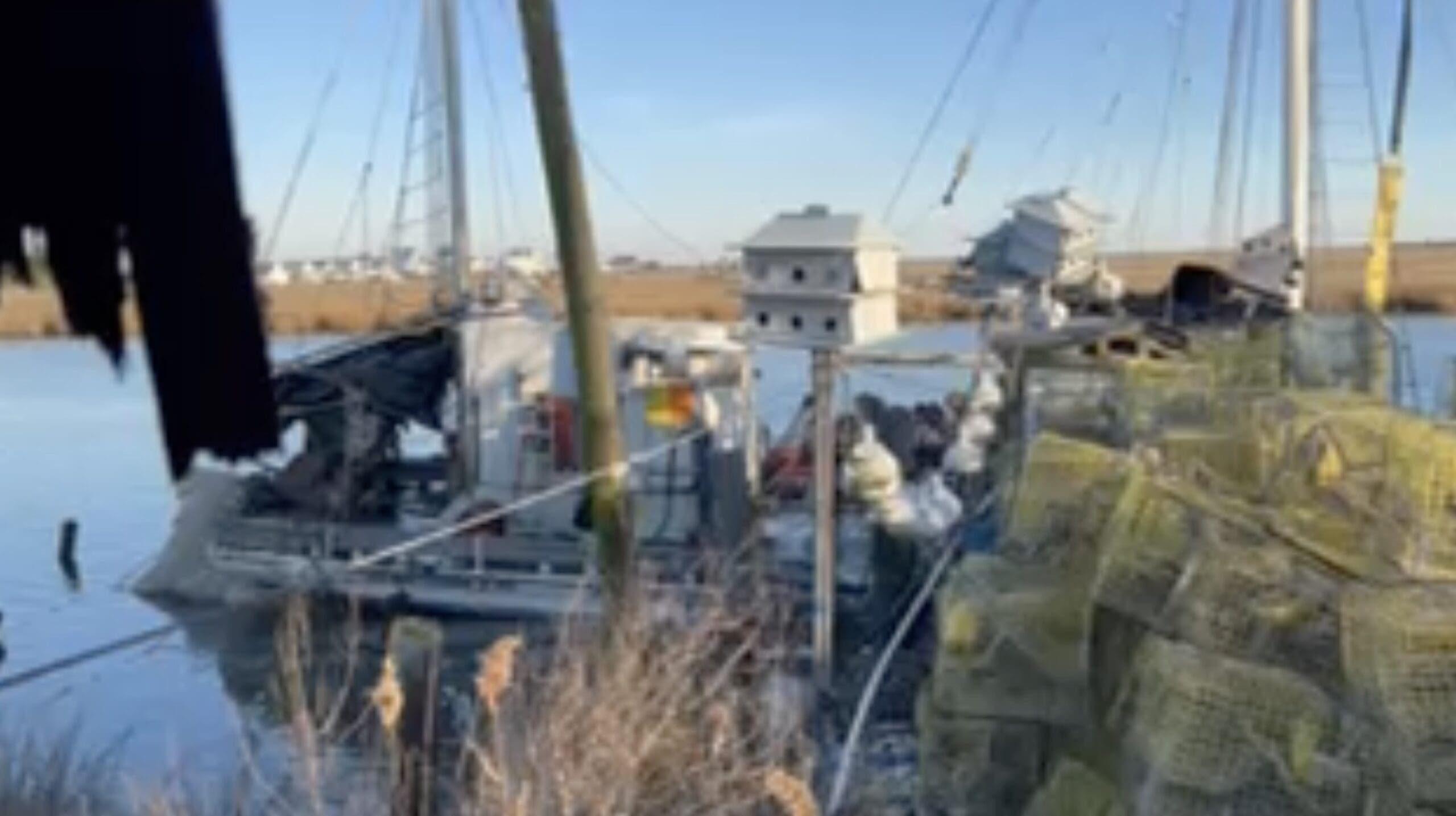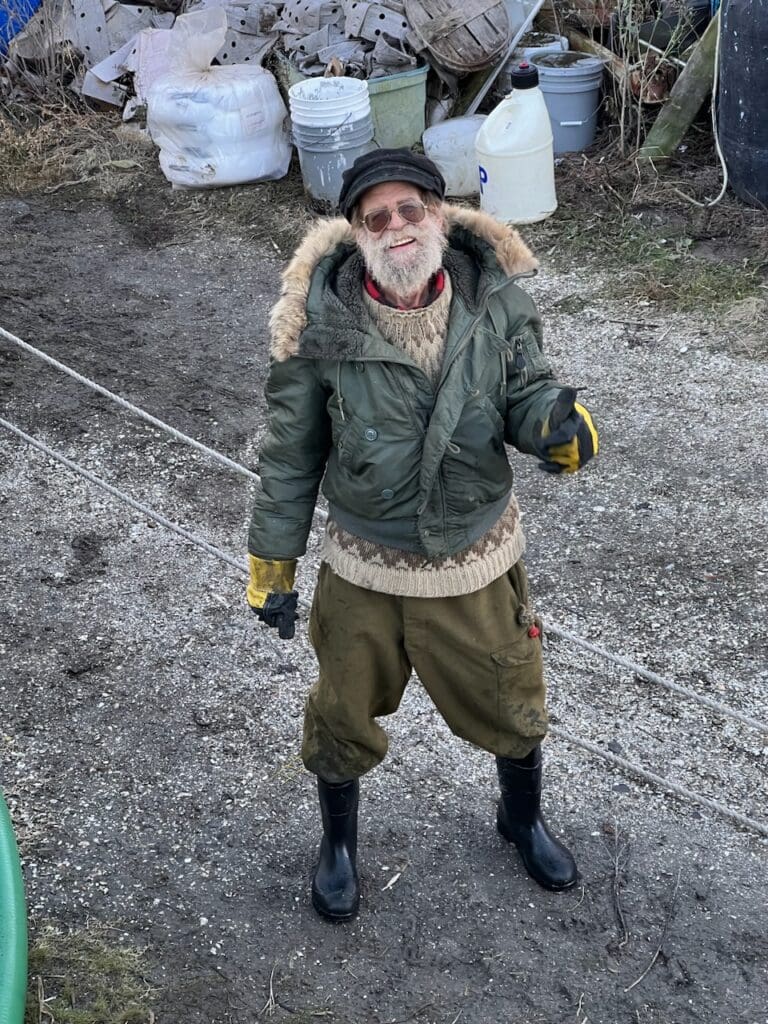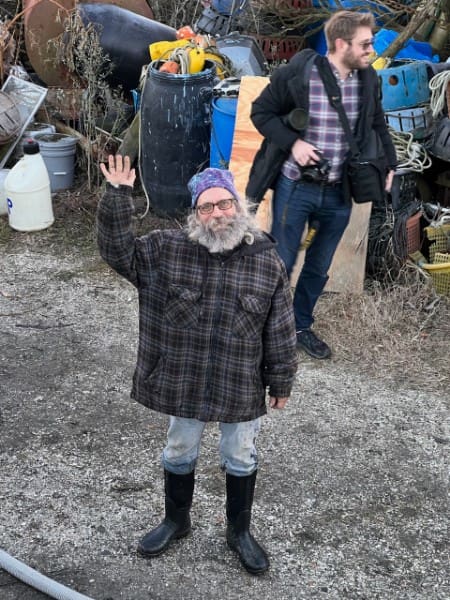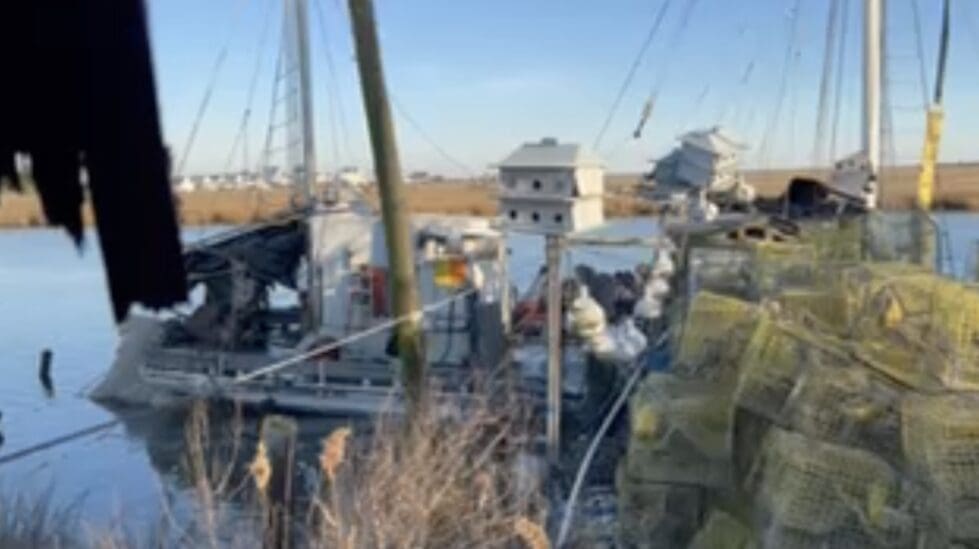
The Maggie S. Myers, out of the water on Wednesday afternoon — at last. (courtesy of Ada Puzzo)
“It’s a sad day in Bowers,” Bowers Beach mayor Ada Puzzo wrote in an email the other day. “Our Maggie sunk last night. She’s sitting on the bottom of the creek right now. I cried like a baby when I saw her there.”
She was referring to the Maggie S. Myers, the world’s oldest surviving oyster schooner.
“It’s hard to explain, but Maggie is more than a boat,” she wrote in a followup text to DelawareLive.
The boat belongs to Frank “Thumper” Eicherly, and stepbrother Brian Howard has launched a $100,000 GoFundMe campaign to help cover the massive costs of recovery.

Captain Frank “Thumper” Eicherly after the Maggie S. Myers was re-floated. (courtesy of Ada Puzzo)
RELATED: Bowers unites to help feed watermen
The boat, which was launched in 1893, sank just before Christmas while tied up at the town dock. It was re-floated on Wednesday.
“We do not yet know the cause” of the sinking, Howard wrote on GoFundMe, adding that recovery “will be expensive and may very well bankrupt us.”
“She is registered as a US historic landmark, and Capt. Thumper has spent 20 years and almost $500,000 restoring her,” he wrote.
Part of that process was turned into a 2012 documentary titled “White Gold: Delaware’s Oystering History.”
Getting the boat out of the water took a lot of specialized equipment and people, including a crane, divers, airbags, pumps, generators, Delmarva Power, the Bowers Beach Volunteer Fire Company, the Delaware Department of Natural Resources and Environmental Control and the U.S. Guard.
But much more work remains.
“Thumper lost all of the equipment he stores on the boat: generators, pumps, tools, maps, etc,” Puzzo wrote. “Stuff he’s used many times to help other boats in trouble out on the bay.”

The GoFundMe page for the Maggie S. Myers.
Why Thumper, Maggie deserve help
Both Puzzo and Brian framed their pitches that the Maggie S. Myers deserved help because of all the help that Eicherly and his wife, Jean, have given for years to the community and its watermen.
“Thumper and Jean have helped me when I needed it,” Marc Perry wrote when he made his donation. “They are amazing people.”
“If any soul deserves your help it is Capt. Thumper,” Howard wrote. “He is a 2009 inductee into the Maritime Hall of Fame who for decades has hosted weekly free meals for those who need them completely out of his own pocket. He was instrumental in developing fishing techniques that greatly reduced the demand for horseshoe crabs as bait (helping save this ancient and endangered species).
“Plus, he and Maggie are the ultimate good Samaritan vessel having abandoned paying work to sail off and rescue other boats in distress countless dozens of times. So many owe their actual lives to this man and his boat as he was always there with pumps and other lifesaving equipment well before the rescue boats could arrive. And now he needs your help.”

Brian Howard after the Maggie S. Myers was re-floated. (courtesy of Ada Puzzo)
“All that information is gone,” Eicherly told WBOC about all the maps and drawings he acquired and compiled since buying the boat in 1999.
“I guess I got it all up here,” he added, pointing to his head, “but that gets a little dicey.”
On the GoFundMe page, Howard said the crane, dive teams and airbag lifting equipment cost $30,000.
“There will be environmental costs on top of this and at the least to get her back underway she will need a new wheelhouse as well as a motor, transmission, new sails, cleaning mud from the bilge and ceiling planking not to mention all new electronics like radar and GPS,” he wrote.
“Even if this goal is met, it may not cover all our expenses to save this great piece of history, but it sure will go a long way.”
some info
Share this Post




